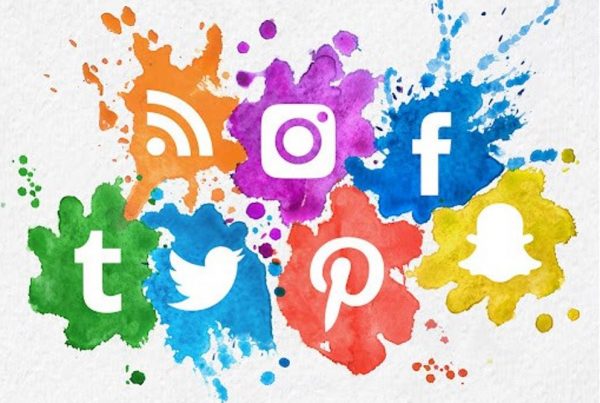
Marketing is the core of every business for several reasons: it introduces your products and services to potential customers, helps your company grow, and enables you to conquer new markets. Technological developments and the rise of social media have revolutionized marketing, giving marketers limitless opportunities.
However, with these changes come accompanying challenges that every marketer must navigate for successful marketing. This article highlights the top eight problems that marketers face today.
1. The Ever-Expanding Field of Marketing
Marketing has evolved from the traditional mainstream media advertising and billboards to the current digital channels and social media. With over a dozen marketing strategies today, you need particular skills to succeed in them.
For instance, you might be good with content marketing and pay-per-click advertising but lack the skills to execute email marketing. Similarly, you might be good at social media marketing but fail to keep up with the ever-changing algorithms and marketing dynamics.
To navigate this problem, marketers should learn the different marketing techniques, strive to keep up with the latest technologies, and collaborate with other marketers to know the working strategies. You may not necessarily be an expert in every single field of marketing, but it is vital to understand the basics. Speak with experts in these niches to learn the basics.
2. Fragmented Customers
Remember a time when Cocacola’s main competitors were Pepsico and Nestle? The beverage-giant marketers didn’t have much work to do except outdo the two companies in convincing consumers to buy their products. Today, hundreds of small and midsize companies manufacture beverages, creating more consumer competition.
This phenomenon is called a fragmented market, whereby no single business has sufficient market influence to move the needle in a particular direction. It is a challenge for marketers to get traffic and leads because customers have many options. Despite setting aside substantial marketing budgets and creating excellent campaigns, the return on investment is not enough.
To keep your customers interested, tomorrow’s good must be better than today’s best.
3. Tracking the Efficiency of Marketing Techniques
It is pointless to run marketing campaigns without measuring the return on investment (ROI). You need to know how much traffic your efforts drew, the engagement from a social media ad, clicks and open rates of emails, etc.
However, tracking the efficiency of your marketing techniques is not easy. Most novice marketers are unsure of the metrics to measure and the tools to use. While most will seek after the vanity matrices such as the number of clicks, leads, conversations, and website visitors, the business will look for the bottom-line impact. Furthermore, measuring the ROI of several marketing channels is complex if you are running campaigns on multiple platforms.
To go around this challenge, understand the different ways of measuring ROI and adopt the right technologies that will link marketing activities to the business generated.
4. Insufficient Marketing Budget
Successful businesses set aside a reasonable budget to fund all their marketing campaigns sufficiently. However, the economy does not always favor business operations. Not all companies will have sufficient money to fund the different communication channels. Without a reasonable budget, the marketing ideas don’t actualize, leading to delayed growth, poor brand awareness, and low sales.
To get around this hurdle, marketing managers must develop a strong business acumen capable of prioritizing activities and demonstrating to the business how the different techniques will increase sales and revenue.
5. Rigidity of Management
Success in marketing and overall business management highly depends on taking risks. The risks can range from approving huge marketing budgets without assurance of ROI to embracing upcoming marketing techniques such as viral TikTok challenges.
Unfortunately, the marketing team and company management may disapprove of risky undertakings or deter the marketer from taking bold steps. This rigidity and lack of adaptability in business management can negatively impact marketing efforts.
Marketers and organization management need to be on the same page and be willing to take on reasonable risks to navigate this challenge.
6. Technological Illiteracy
Technological literacy is the ability to use, understand and leverage technology to perform certain functions. Digital marketing tools and software have improved how marketers develop, manage, track and analyze their marketing techniques.
However, most of these tools are complex for beginners and are available at a premium rate that small-scale business owners and marketers may not afford.
The solution is to take time to learn about marketing technologies available before purchasing a long-term plan. Most of the solutions offer free trials; leverage the free trial to learn everything you need to use a particular technology.
7. Poor Customer & Campaign Alignment
There are over a dozen marketing techniques to help you raise brand awareness, attract new customers, retain existing customers and boost sales. Most marketers create a generic campaign and duplicate it across all the different channels, hoping it will impress every consumer. If you do not have a deep understanding of who your customer is and where they are located, your business wastes time and resources on inefficient strategies.
Each marketing technique has its target audience and particular aspects that make it suitable for that age group or demographic. Marketers should evaluate each method and create personalized campaigns to eliminate this problem.
8. Retaining Customers
As a company grows, the marketing goal shifts from acquiring new customers to retaining old ones and making them loyal. Most marketers face the challenge of retaining customers for several reasons, ranging from competition from similar companies, poor customer relations that push clients away, and a general lack of client appreciation.
To navigate this challenge, marketers should adopt a learning approach that is ready to identify gaps and leverage them to do better than the next company. Additionally, they should think of creative tactics to outperform the competition without overspending by adopting strategies that retain existing customers. These strategies include loyalty programs, client appreciation posts on social media, personalized customer relations, and communications.
Which of the above problems are you facing in your marketing efforts?



